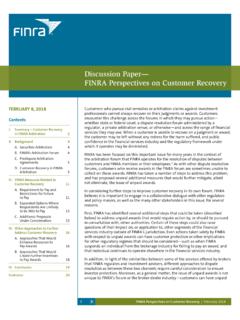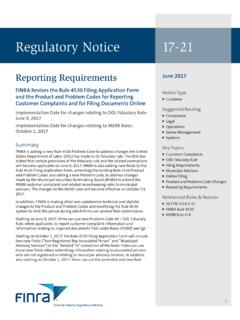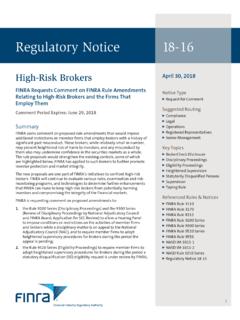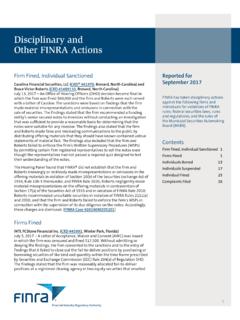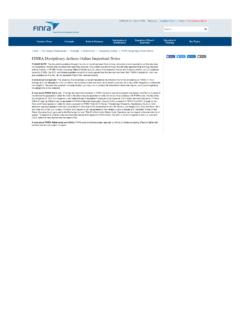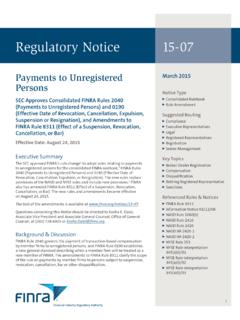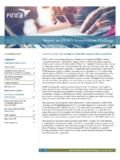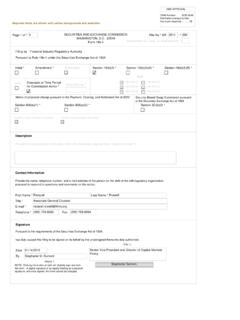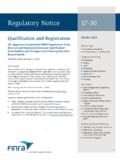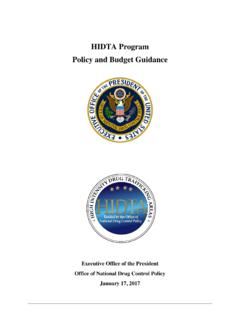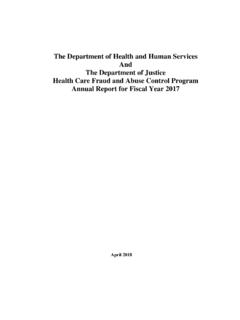Transcription of FINRA 2018 Annual Budget Summary
1 FINRA 2018 Annual Budget Summary11 Chairhmnhm n1dEnOLeeLiRobert W. CookPresident and Chief Executive OfficerChairman and CEO LetterFINRA performs a vital role in the financial regulatory structure: overseeing securities brokerage firms and individual brokers doing business with the public. Under the supervision of the Securities and Exchange Commission, FINRA conducts a wide range of regulatory functions every day, including examining firms and individuals for compliance with regulatory requirements; providing tools and resources to aid in achieving compliance; conducting ongoing surveillance of trading in the securities markets for potential misconduct; bringing enforcement actions to address violations of industry rules and regulations.
2 And providing industry wide utilities such as disclosure and trade reporting facilities. Our mission is to protect investors and promote market integrity in a manner that facilitates vibrant capital a not-for-profit, self-regulatory organization whose operations are funded by industry fees without the support of any taxpayer dollars FINRA must prudently manage its finances to ensure it can appropriately fund its mission. In connection with our ongoing organizational improvement initiative, FINRA360, the FINRA Board of Governors has reviewed the organization s overall finances and its projected revenues and expenses for 2018.
3 In the interest of promoting greater transparency regarding our operations, we are publishing for the first time a Summary of our Financial Guiding Principles, as well as an overview of FINRA s 2018 Annual Budget . These forward-looking materials are intended to complement the audited Annual Financial Report that we have published for many years that describes our finances and operations over the prior year. Financial Guiding PrinciplesThe Financial Guiding Principles (Principles) set forth the key concepts and considerations that guide FINRA s longer-term financial planning and the development of our Annual Budget .
4 Publication of the Principles provides more transparency about how we manage our financial resources in order to fulfill our regulatory responsibilities and further our mission. Key elements of the Principles, discussed in more detail in the attached document, include:00 Fund Our Mission As an industry-funded, not-for-profit organization, we must ensure we maintain adequate resources to properly support our Financial Transparency For many years, we have published an audited Annual Financial Report that reviews our previous year s financial performance on a GAAP basis and includes reports from the Board s Investment, Management Compensation and Audit committees.
5 Starting this year, FINRA s Annual Budget Summary builds on that foundation by describing our anticipated primary sources of income and our primary expenses for the year ahead. This transparency is important to enhancing the opportunities for our member firms to provide informed and meaningful input on our operations. William H. HeymanChairman 2 FINRA N20N210F8n0uallaA00 Manage Expenses Responsibly We must carefully manage our expenses while ensuring that we can carry out our regulatory responsibilities effectively.
6 Both employee compensation and capital initiatives, our two biggest expenses, are addressed in the Reasonable Member Fees While industry fees are a vital component of our funding model, we must be cognizant of the burdens that fees can place on member firms and registered representatives. Any increase to such fees must be filed with the Securities and Exchange Commission. We will increase such fees only after evaluating other potential sources of funding (including drawing down on reserves) and determining that our expenses are appropriately calibrated to meet our regulatory responsibilities.
7 00 Use Fines to Promote Compliance and Improve Markets When a member firm or registered representative engages in misconduct, we first seek restitution for any harmed customers. Like other self-regulatory organizations, we also impose fines in order to discourage similar misconduct. When we impose fines, the amounts are based on pre-established guidelines and the facts and circumstances of the individual case, not any revenue policy has long required that fine monies be allocated to capital and strategic initiatives.
8 In recent years, fine monies have supported a number of important regulatory projects. For example, we recently carried out a successful multi-year effort to migrate FINRA s technology environment from a data center structure to a cloud-based architecture, reducing expenses and increasing surveillance speeds. We moved our continuing education program online in order to provide representatives with more flexibility to satisfy their requirements. And we launched the TRACE for Treasuries initiative to provide increased understanding and enhanced surveillance of the Treasury market through the reporting of secondary-market transactions in Treasury Principles reflect enhanced governance procedures, restrictions on use, and transparency requirements related to fine monies: Fine monies will be accounted for separately and are not considered in determining employee compensation and benefits.
9 Any use of fine monies must be approved, separately from other expenditures, by the Board or its Finance, Operations and Technology Committee (Finance Committee); Fine monies will be targeted to one of several enumerated purposes; If fine monies are not fully utilized in a given year, the remaining fine balance will be tracked separately for use in future years; and All uses of fine monies will be itemized and disclosed on an Annual basis (starting with fines collected in 2018).00 Sustain Appropriate Financial Reserves Our financial reserves, which originally derived from the sale of NASDAQ that culminated in 2006, are overseen by the Board s Investment Committee and managed to preserve principal and support our regulatory operations.
10 Our investment strategy is described in the Annual Financial Report. The Principles establish a goal of maintaining reserves equal to at least one year of expenditures. Reserves may be used to defer member fee increases or make up cash flow losses, among other N20N210F8n0uallaA2018 BudgetFINRA s regulatory responsibilities are as extensive and complex as ever. Total assets under management by member firms have increased, the number of registered representatives has remained largely constant, and market innovations in financial technology and other areas continue to present new regulatory challenges.
